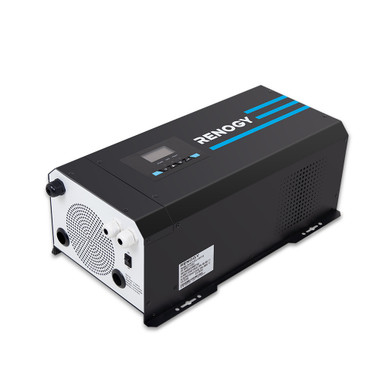AfterShock
New Member
- Joined
- Apr 15, 2021
- Messages
- 21
I've done a build on my previous RV with 600W solar, PWN charger, 4 x 6V lead acid batteries and a standard 1000W pure sine inverter.
Now that I've purchased a longer term RV trailer, I'd like to set it up the best way possible. That being said, I can't seem to find out what the best set up is. I do have a few questions.
1. Is it worth it to install an Inverter / Charger directly to the panel that can switch from shore power to solar? They seem to be 3 to 5 times the price of a regular Puresine inverter. What I've done in the past is simply plug in the shore power cable into the inverter and had no issues. I am looking at running 2000 or 3000 W this time.
2. I've purchased 2 large LifePO4 12V 200Ah for a total of 400Ah. Should I run that in series or parallel? If I were to run it in series at 24V, what do I need to do for the trailer to run on 12V when not plugged into the inverter?
3. I do not usually camp where shore power is available, and the trailer sits in storage as it is too big for my driveway. I essentially have to rely on the solar system to recharge the batteries between uses. Are there any dangers to leaving the system unattended for long periods of time and what can I do to mitigate them? Is a good MPPT controller sufficient?
Now that I've purchased a longer term RV trailer, I'd like to set it up the best way possible. That being said, I can't seem to find out what the best set up is. I do have a few questions.
1. Is it worth it to install an Inverter / Charger directly to the panel that can switch from shore power to solar? They seem to be 3 to 5 times the price of a regular Puresine inverter. What I've done in the past is simply plug in the shore power cable into the inverter and had no issues. I am looking at running 2000 or 3000 W this time.
2. I've purchased 2 large LifePO4 12V 200Ah for a total of 400Ah. Should I run that in series or parallel? If I were to run it in series at 24V, what do I need to do for the trailer to run on 12V when not plugged into the inverter?
3. I do not usually camp where shore power is available, and the trailer sits in storage as it is too big for my driveway. I essentially have to rely on the solar system to recharge the batteries between uses. Are there any dangers to leaving the system unattended for long periods of time and what can I do to mitigate them? Is a good MPPT controller sufficient?





